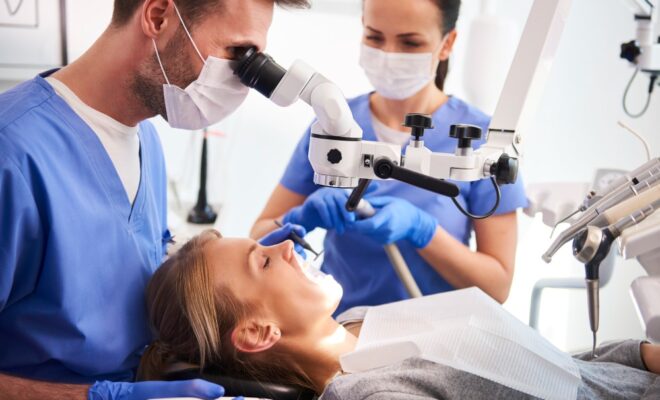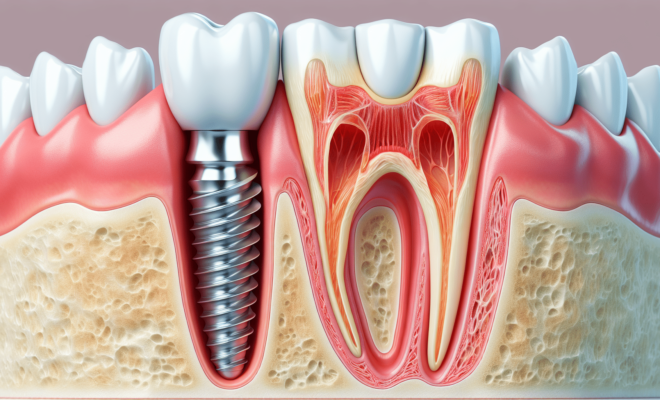Debunking Common Myths About General Dentistry

Dentistry is an essential part of health, yet myths often cloud the understanding of general care. These misconceptions can deter people from seeking necessary treatment. For instance, many believe that dentists only focus on teeth. In reality, they care for the entire mouth. Another myth is that dental visits are only needed during pain. Regular check-ups can prevent issues before they start. Finally, some think that braces are the only option for straightening teeth. Today, options like Invisalign in Burlington offer alternatives. This treatment clears the path to a better smile without traditional braces. Understanding the truth about these myths can lead to better oral health. Let’s explore and debunk these common myths together. In doing so, we hope to show the importance of regular dental care and the variety of treatments available. Prioritizing oral health can improve overall well-being and ensure a lifetime of healthy smiles.
Myth 1: Dentists Only Care for Teeth
Many people think dentists only deal with teeth when in fact they look after the entire oral cavity. This includes the gums, tongue, and even the jaw. Dentists check for signs of diseases such as oral cancer. They also monitor gum health to prevent conditions like periodontitis. A healthy mouth supports overall health. The Centers for Disease Control and Prevention (CDC) emphasize this connection, noting the links between oral health and conditions like heart disease. By understanding this broader role, patients can appreciate the full scope of dental care.
Myth 2: Dental Visits Are Only Necessary During Pain
Some assume a visit to the dentist is only required when experiencing pain. However, regular check-ups are vital for maintaining oral health. These appointments help in spotting issues early, preventing more severe problems later. For instance, small cavities can be treated before they grow larger and require more complex procedures. The American Dental Association (ADA) recommends seeing a dentist at least twice a year. Routine care is a preventive measure that can save time, money, and discomfort down the line.
Myth 3: Braces Are the Only Solution for Misaligned Teeth
Braces have been a popular solution for straightening teeth, but they are not the only option. Invisalign offers an alternative that many find appealing. This method uses clear aligners that are less noticeable than traditional braces. They can be removed for eating and cleaning, offering more flexibility. This is particularly beneficial for adults seeking subtle treatment options. Understanding the variety of choices empowers patients to find a solution that fits their lifestyle and needs.
Comparing Braces and Invisalign
| Feature | Braces | Invisalign |
|---|---|---|
| Appearance | Metal brackets and wires | Clear aligners |
| Removability | Fixed in place | Removable |
| Comfort | May cause discomfort | Smooth and comfortable |
| Cleaning | Requires special tools | Easy to clean |
Myth 4: Oral Health Is Not Linked to Overall Health
A belief exists that oral health is separate from the rest of the body’s health. In truth, poor oral hygiene can lead to serious health issues. Gum disease is linked to heart disease and diabetes. Bacteria from the mouth can travel through the bloodstream, affecting other areas. Maintaining good oral hygiene is crucial for overall health. This involves brushing twice a day, flossing daily, and using mouthwash. By doing so, you support not just your mouth, but also your entire body.
Myth 5: Sugar Is the Only Culprit for Cavities
While sugar plays a significant role in cavity formation, it’s not the sole factor. Cavities form from acidic by-products of bacteria in the mouth. These bacteria thrive on sugar, but they can also feed on carbs from other foods. Sticky and starchy foods like bread and chips can contribute. Good oral hygiene and regular dental visits can help manage this risk. Drinking plenty of water and eating a balanced diet also support dental health.
In conclusion, understanding the truth behind these myths can lead to better oral health. Regular dental care and awareness of treatment options are essential. By debunking myths, we can all move towards healthier and happier smiles.








